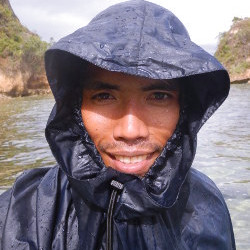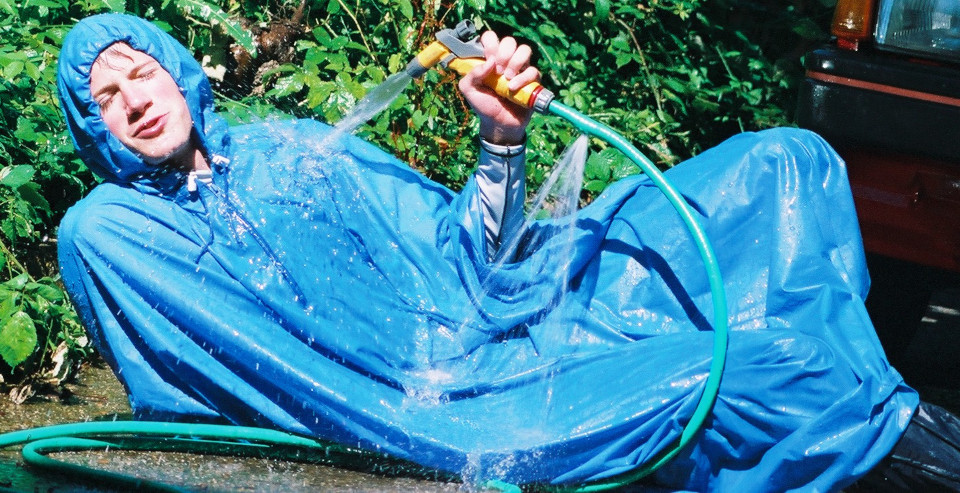Essential Hoods
Get used to wearing a hood. It keeps you dry for longer, warm on windy days, and avoids sunburn.
Hoods are an essential part of any proper watersports kit because they add many handy features. They come in a wide variety of designs and styles. Details make all the difference in the usefulness of your hood. Which one works out best for you depends on what you use it for.
Hoods help you stay warm and reasonably dry. Without a hood, rain or spray will run into your collar and soak your clothes underneath. For most watersports that may not matter because your clothes get soaking wet anyway, but when hiking or around town you want to a hood with a good seal around your face.
No More Hats
A hood usually weighs less than a hat, always stays with you, no matter what you do,
and doesn't fall off in the heat of the action.
In cooler weather it keeps your head warmer by reducing heat loss and wind chill.
You can lose up to 30% of your body heat through your head.
How important is a hood?
A hood can be quite significant in many ways. Here are a few reasons why:
Waterproofing
A well-designed hood reduces the amount water entering the garment through the top opening. This ensures that your head and neck stay reasonably dry even in heavy rain.
Wind Resistance
Hoods can also help block wind gusts, which is important for maintaining body heat when it's cold outside or during high-altitude activities like hiking.
Visibility
A hood with a visor or brim can improve visibility by shielding your eyes from the rain. A colourful hood makes you more visible to others.
Practicality
Some hoods are adjustable, allowing you to customize their fit for optimal protection without obstructing your view. If the hood is too big you won't see much. Look out for a cinch cord on the back to hold the hood to your head so it won't shift around and cover your face.
In summary, a hood is an important feature in rain gear
because it enhances waterproofing, wind resistance, visibility, and practicality
while also offering style options.
So when choosing between different types of rain protection,
consider whether the garment has a functional hood that suits your needs.
Good Fit
Most rain clothes have hoods attached. A good fit is important. Correct use of the hood makes all difference whether you stay dry or get wet.
A good seal reduces the amount of water that comes in around your face. Your hood will never be 100% waterproof, but you can get a close fit for fast action sports or in windy conditions. Some hoods have an extra inner seal, others just wrap the edge around your face
Tight fitting hoods are useful for immersive watersports, where your head briefly goes underwater, like kayak rolling, snorkelling, or swimming. They combine a tight fit with a loose outer spray cover. The inner cover can be pulled tightly around your face to reduce the amount of water coming in, while the outer shields you from sun or spray.

You could keep the hood down and tie it round your neck for better visibility, but that lets some water run down the inside and get your clothes wet.

In heavy rain you may want to tie it closely around your face. Some water always comes in from the face opening over time. Try it in the shower.

Hood with visor and inner seal for wild splash sports. Strings around the face tie it down for a good fit.
Waterproofing Test
A hood keeps you warm but not always dry. It leaks around the face in heavy rain or spray. Learn to live with it.
Before you head out for adventure, find out how waterproof your hood is. Most hoods leak, the question is how much.
Wear a hooded long sleeve T-shirt underneath so you can spot where leaks may appear. Then wear the garment you want to test. Put the hood up and check for a proper fit.
Next step into the shower or have a friend hose you down from top to bottom, beginning from the backside, then the front and finally the face.
When you take the garment off you'll see any leaks on the clothes you wear underneath. The face opening is where most water comes in.
Make sure any hooded water clothes fit well or they can be annoying.
Wear them in the water as you would during your adventures,
with swim shirts underneath your anoraks, cagoules or ponchos.
Try this out in your bath at home or in the local swimming pool.
Maybe your friends want to come along and splash around.
It's great fun.
